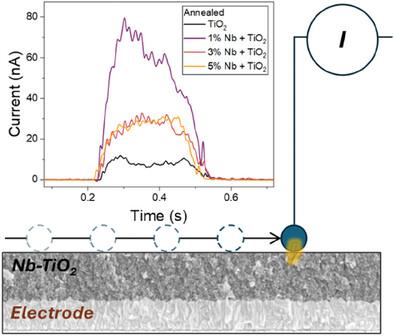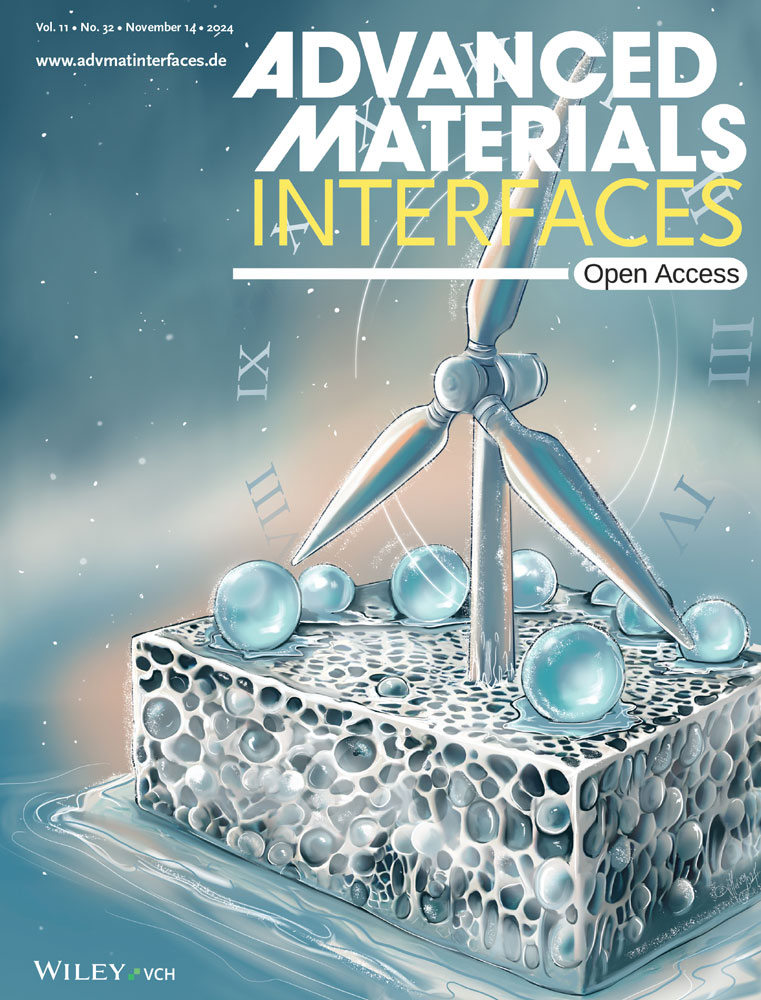Niobium‐Doped Titanium Dioxide: Effect of Conductivity on Metal‐Semiconductor Tribovoltaic Devices
IF 4.3
3区 材料科学
Q2 CHEMISTRY, MULTIDISCIPLINARY
引用次数: 0
Abstract
Tribovoltaic devices have emerged as promising technologies for converting mechanical motion to electricity via surface charge generation. To maximize the electromechanical conversion of tribovoltaic devices, conventional literature has focussed on engineering a large difference in work functions between the contact materials. However, recent reports suggest that other factors beyond work function, such as temperature, play a key role in electromechanical conversion. Herein, TiO

掺铌二氧化钛:导电性对金属半导体摩擦光伏器件的影响
通过表面电荷的产生将机械运动转化为电能的摩擦光伏装置已成为一项前景广阔的技术。为了最大限度地提高摩擦光伏器件的机电转换率,传统文献主要关注如何在工程上使接触材料之间的功函数相差较大。然而,最近的报道表明,除了功函数之外,温度等其他因素在机电转换中也起着关键作用。在这里,TiO2(一种廉价、丰富的氧化物材料)掺杂了 Nb5+,从而使摩擦光伏性能提高了 65 倍。这归因于掺杂 Nb5+ 提高了二氧化钛薄膜的导电性。此外,研究还表明,这种改进在厘米级测试中也能保持。这项工作表明,在设计摩擦光伏设备时,考虑一系列因素(尤其是导电性)非常重要,可广泛用于优化机电转换。
本文章由计算机程序翻译,如有差异,请以英文原文为准。
求助全文
约1分钟内获得全文
求助全文
来源期刊

Advanced Materials Interfaces
CHEMISTRY, MULTIDISCIPLINARY-MATERIALS SCIENCE, MULTIDISCIPLINARY
CiteScore
8.40
自引率
5.60%
发文量
1174
审稿时长
1.3 months
期刊介绍:
Advanced Materials Interfaces publishes top-level research on interface technologies and effects. Considering any interface formed between solids, liquids, and gases, the journal ensures an interdisciplinary blend of physics, chemistry, materials science, and life sciences. Advanced Materials Interfaces was launched in 2014 and received an Impact Factor of 4.834 in 2018.
The scope of Advanced Materials Interfaces is dedicated to interfaces and surfaces that play an essential role in virtually all materials and devices. Physics, chemistry, materials science and life sciences blend to encourage new, cross-pollinating ideas, which will drive forward our understanding of the processes at the interface.
Advanced Materials Interfaces covers all topics in interface-related research:
Oil / water separation,
Applications of nanostructured materials,
2D materials and heterostructures,
Surfaces and interfaces in organic electronic devices,
Catalysis and membranes,
Self-assembly and nanopatterned surfaces,
Composite and coating materials,
Biointerfaces for technical and medical applications.
Advanced Materials Interfaces provides a forum for topics on surface and interface science with a wide choice of formats: Reviews, Full Papers, and Communications, as well as Progress Reports and Research News.
 求助内容:
求助内容: 应助结果提醒方式:
应助结果提醒方式:


